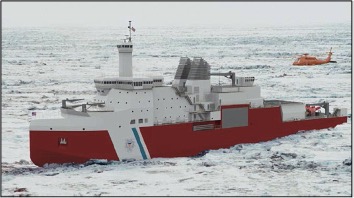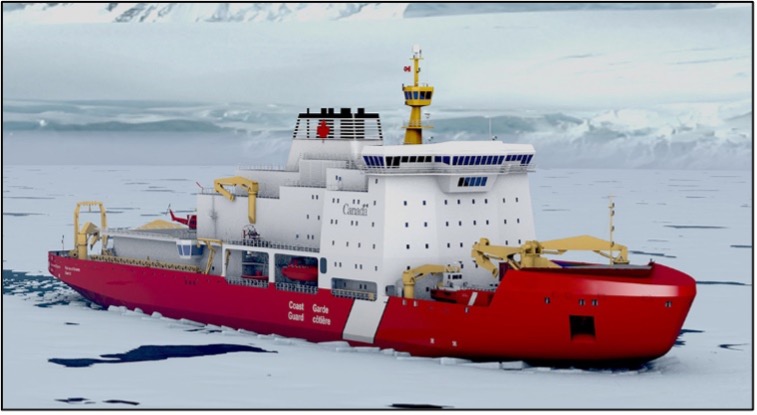How to secure the Canadian Arctic?
With Russia’s invasion of Ukraine, the security of the Canadian Arctic has come sharply into focus. Neither Canada or the United States has the maritime assets to mount any sort of resistance to Russian encroachment on the Canadian North and is unlikely to have the means any time soon.
Canada’s only heavy ice breaker the CCGS Louis S. St-Laurent entered service in 1969 making her now 54 years old. She was scheduled to have been retired at least 15 years ago but in the absence of a replacement she has been endlessly refitted to keep her going pending the construction of two new Polar Ice Breakers.
Under Canada’s National Shipbuilding Strategy, plans for a replacement Polar Icebreaker to be built were first announced in 2008. Under current plans announced in 2021, two vessels are now to be built, the first at Seaspan Shipyards in North Vancouver, a second by Davie Shipbuilding in Lévis, Quebec. With the National Shipbuilding Strategy running well over budget and far behind schedule, it is unlikely that either vessel will be delivered before the early 2030’s and neither will be equipped with the capability to provide a deterrent to a potential aggressor.
While Canada hesitates, Russia continues to expand its home grown icebreaker fleet with plans announced to operate at least 13 heavy-duty icebreakers, the majority of which are already in operation and powered by nuclear reactors. Meanwhile, China is steadily building its own capacity with a third conventionally powered ice breaker currently under construction and plans for the early development of its own nuclear powered fleet which were first announced in 2019.
Against this background, there is a debate in the United States as to whether it is the U.S. Navy or Coast Guard that should procure and operate ice breakers. Currently, the U.S. has a single heavy ice breaker, the USCGC Polar Star, her sister ship Polar Sea having been laid up since 2010 following main engine failure.
The U.S. Coast Guard does have a plan to build new heavy ice breakers and has placed orders for 3 vessels with VT Halter Marine. The contract price for the first vessel is a fixed price of US$745.9 with a total contract price of $1.94 billion for all 3 vessels. Work would be spread over several yards but primarily in Pascagoula, Mississippi. There are also plans for 3 new medium ice breakers.
Singapore based ST Engineering, the parent company of VT Halter appears to have decided that the financial risks associated with the contract were too much to bear and therefore disposed of VT Halter and its assets to industry rival Bollinger Shipyards for $15 million with an additional $10.25 million payable pending the award of future contracts. It is understood that Bollinger seeks to renegotiate the ice breaker contract price tag.

Design of new USCG Polar Security Cutter – VT Halter
The Arctic Council, created in 1996, comprises the eight Arctic states of Russia, the United States, Canada, Finland, Norway, Iceland, Sweden, and Denmark. The council addresses a broad range of issues affecting the polar region.
There are also 8 observer states comprising Germany, the Netherlands, Poland, United Kingdom, France, Spain, China, India, Italy, Japan, South Korea, Singapore and Switzerland. Membership of the European Union and Turkey is pending. Observer status includes a requirement for applicants to recognize the sovereignty of Arctic States and “recognize that an extensive legal framework applies to the Arctic including the United Nations Convention on the Law of the Sea.
While waiting for heavy ice breakers, Canada flies the flag in the Arctic with a fleet of newly built lightly armed Arctic Offshore Patrol Ships. The construction contract was awarded to Irving Shipbuilding in Halifax and has not been without controversy. The $5 billion project has so far delivered 3 vessels out of the 6 contracted. In addition, the Canadian Coast will take delivery of 2 similar vessels at a project cost of $2.1 billion. These are scheduled for delivery in 2026/27.
Meanwhile Davie Shipbuilding in Quebec has been formally accepted back into the National Shipbuilding Strategy and is currently negotiating for the construction of a fleet of 6 icebreakers to service Canada’s east coast shipping lanes.

